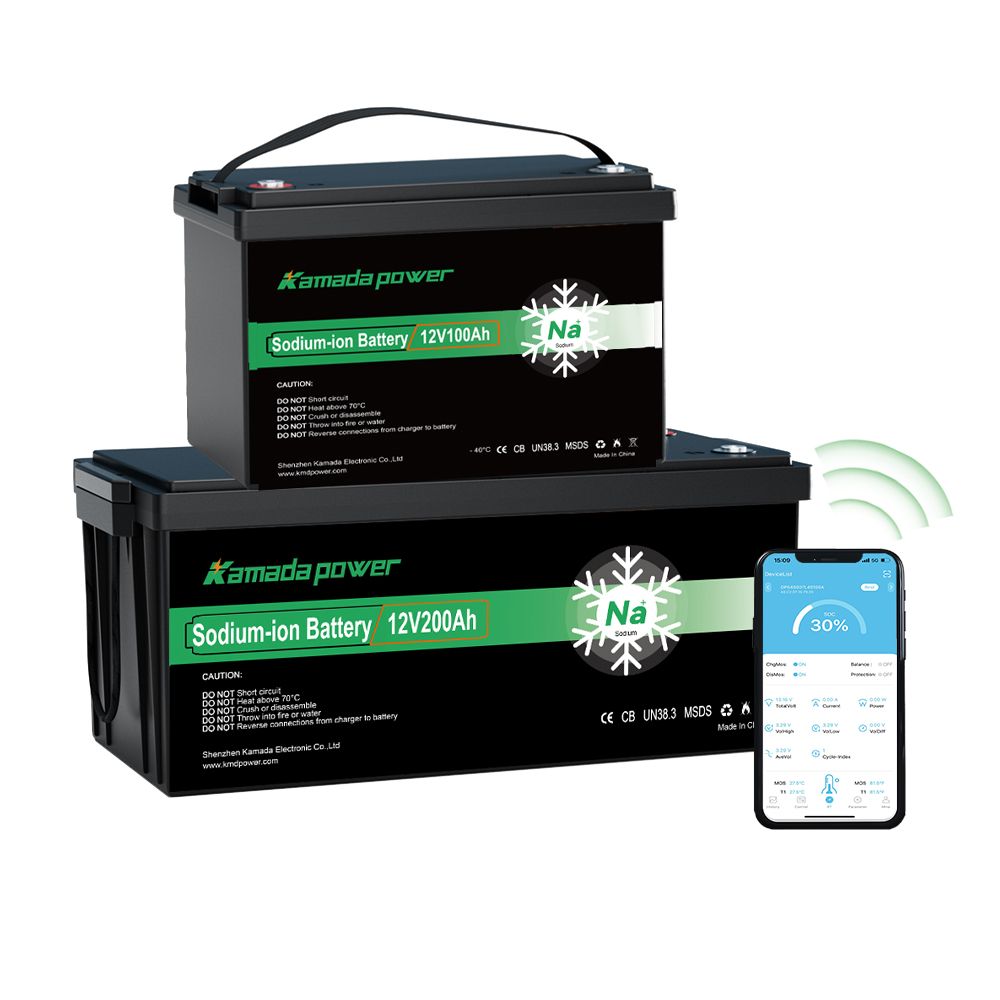Как системы управления аккумуляторами предотвращают их выход из строя? Современные коммерческие аккумуляторные батареи, например, в электропогрузчиках, хранят значительное количество энергии в компактном пространстве. Эта энергия требует точного управления для обеспечения безопасности и надежности.
Решение? Система управления батареей (BMS) - мозг батареи. Она активно следит, контролирует и защищает каждый элемент, предотвращая серьезные сбои. Без нее вы, по сути, работаете без руководства.
Здесь мы рассмотрим распространенные неисправности аккумуляторов и то, как правильно спроектированная BMS обеспечивает безопасность, надежность и долговечность.

Ионно-натриевая батарея 12v 200ah
Враг внутри: Понимание распространенных способов отказа литий-ионных батарей
Чтобы оценить решение, мы должны сначала понять проблему. Литий-ионные элементы - мощные химические системы, но они работают в строгих пределах. Нарушение этих ограничений может привести к быстрой деградации или выходу из строя.
1. Перезарядка
При зарядке элемента сверх безопасного предела избыток ионов лития попадает на анод, образуя металлические отложения лития, называемые литиевым напылением. Эти отложения могут пробить сепаратор, вызвать внутреннее короткое замыкание и привести к быстрому тепловому выходу из строя. BMS предотвращает это, отключая зарядку при достижении нужного порога.
2. Чрезмерная разрядка
Разрядка элемента ниже безопасного напряжения может не вызвать непосредственной опасности, но значительно сокращает срок службы батареи. При очень низком напряжении медный токоприемник анода может раствориться в электролите, что приведет к неравномерному осаждению и необратимой потере емкости. Защитные системы BMS поддерживают минимальные пределы напряжения, чтобы избежать этой деградации.
3. Перегрузка по току (короткое замыкание и перегрузка)
Чрезмерный ток, будь то постоянная перегрузка или короткое замыкание, приводит к локальному нагреву, который может повредить внутренние компоненты и привести к возгоранию. Устройства BMS обнаруживают случаи перегрузки по току и отключают блок за микросекунды, предотвращая перегрев.
4. Температурные экстремумы
Батареи работают в безопасном температурном диапазоне. Высокие температуры ускоряют химический распад, сокращая срок службы. Низкие температуры замедляют движение литий-иона, что приводит к образованию литиевого покрытия во время зарядки. Система BMS контролирует температуру и регулирует зарядку/разрядку, чтобы предотвратить эти риски.
5. Дисбаланс клеток
Различия в производстве и неравномерное старение приводят к дисбалансу элементов. Со временем некоторые элементы могут перегружаться, что снижает общую емкость и долговечность аккумулятора. Стратегии балансировки BMS поддерживают одинаковое напряжение и уровень заряда всех элементов.
СЭЗ как многослойный щит: Основные защитные функции
BMS использует несколько, частично совпадающих стратегий защиты в режиме реального времени.
1. Защита по напряжению
- Защита от перенапряжения (OVP): Контролирует каждый элемент; мгновенно отключает ток заряда при превышении предельных значений (~4,2 В).
- Защита от пониженного напряжения (UVP): Предотвращает разрядку элементов ниже минимального безопасного напряжения (~2,5 В).
2. Защита по току
- Защита от перегрузки по току (OCP): Обнаруживает длительный ток, превышающий безопасные пределы, и отключает блок.
- Защита от короткого замыкания (SCP): Реагирует на мгновенные скачки напряжения, надежно изолируя пакет в течение микросекунд.
3. Защита от перегрева
- Защита от перегрева (OTP): Датчики NTC контролируют нагрев; BMS отключает блок при достижении небезопасных температур.
- Защита от перегрева (UTP): Блокирует зарядку при низких температурах (часто ниже 0°C), чтобы предотвратить окисление лития, и позволяет контролировать разрядку.
4. Балансировка клеток
- Пассивное балансирование: Отводит избыточную энергию из высоковольтных элементов, чтобы выровнять напряжение в блоке.
- Активная балансировка: Передает энергию от полностью заряженных элементов к менее заряженным, повышая эффективность и полезную емкость больших систем, таких как системы хранения энергии (ESS).
Расширенные возможности BMS: Проактивное предотвращение сбоев
Качественная BMS не только реагирует на проблемы, но и предотвращает их.
Оценка состояния заряда (SOC) и состояния здоровья (SOH)
Сложные алгоритмы, сочетающие кулоновский подсчет и моделирование напряжения, обеспечивают точные показания SOC. Оценка SOH отслеживает деградацию батареи, позволяя планировать техническое обслуживание до возникновения неожиданных сбоев.
Диагностика неисправностей и регистрация данных
BMS регистрирует все события, связанные с неисправностями, фиксируя данные о напряжении, токе и температуре. Это помогает в устранении неполадок, гарантийных претензиях и оптимизации системы.
Коммуникационные протоколы (CAN, SMBus, I²C)
Коммуникационные шины позволяют BMS взаимодействовать с зарядными устройствами и контроллерами для интеллектуального управления питанием, корректируя профили зарядки или снижая нагрузку при необходимости.
Высокая стоимость неадекватной BMS
Экономия на BMS - это ложная экономия. Незначительная предварительная экономия может привести к дорогостоящим отказам, простоям и проблемам с гарантией.
| Характеристика | Высококачественная BMS | Плохое состояние / отсутствие BMS |
|---|
| Безопасность | Многочисленные резервные средства защиты | Конфигурация с высоким уровнем риска |
| Продолжительность жизни | 1000+ циклов (с балансировкой и защитой) | Несколько сотен циклов |
| Производительность | Полная полезная емкость, стабильная работа | Снижение производительности, внезапные отключения |
| Гарантия | Низкий процент рекламаций, высокое доверие клиентов | Высокая доходность, репутационный риск |
| Сертификация | Соответствует требованиям UL, CE, IEC | Может не пройти испытания на безопасность |
ЧАСТО ЗАДАВАЕМЫЕ ВОПРОСЫ
Q1: BMS против PCM?
PCM обеспечивает базовые отсечки. Полноценная BMS добавляет интеллектуальность, стратегию и связь, что необходимо для серьезных промышленных приложений.
В2: Может ли BMS выйти из строя?
Да. Именно поэтому качественная конструкция, надежные компоненты и избыточные меры безопасности имеют решающее значение для критически важных приложений.
Вопрос 3: Как BMS измеряет SOC?
Преимущественно с помощью кулонов, периодически перекалиброванных по напряжению покоя для обеспечения точности.
Q4: Что делать, если я обойду BMS?
Обход основных средств защиты может принести краткосрочную выгоду, но значительно повышает риск сбоев и повреждения оборудования. Это не рекомендуется.
Q5: Необходима ли BMS для всех химикатов?
Для литий-ионных и аналогичных химикатов - безусловно. Даже более безопасные химические элементы, такие как LiFePO4 и натрий-ионные, выигрывают от использования BMS для оптимального срока службы и производительности.
Заключение
Элементы аккумулятора сами по себе являются сырым потенциалом. Система BMS преобразует этот потенциал в безопасный, надежный и долговечный источник энергии. Это самый важный компонент для защиты ваших инвестиций и обеспечения стабильной и безопасной работы.
Есть вопросы по выбору подходящей BMS для вашего промышленного применения? Обратитесь к нашим экспертам-Мы поможем вам разработать более безопасную аккумуляторную систему.